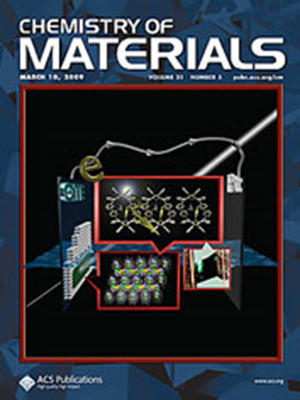金属材料和金属氧化物的水稳定性
IF 7
2区 材料科学
Q2 CHEMISTRY, PHYSICAL
引用次数: 0
摘要
鉴于水作为溶剂无处不在,了解材料在水中的稳定性对于广泛的工业和技术应用至关重要。在这项研究中,我们系统地研究了超过2105种金属、金属间化合物和金属氧化物在水稳定区内的耐蚀性,并鉴定了637种水稳定材料,包括纯金属、金属间化合物和氧化物。我们证明了金属间化合物或多金属金属氧化物的形成可以进一步延长给定金属物种的水稳定性窗口,即使相应的纯金属或金属氧化物在水中本质上是不稳定的。这种稳定效应源于热力学原理,因为多金属、金属间或金属氧化物基态需要在由单金属对应物(例如纯金属或二元氧化物)制成的凸壳中显示负的地层能量。不同金属之间的协同作用为指导多金属体系的耐腐蚀成分设计提供了有价值的框架。我们的研究结果为理解耐腐蚀材料的设计原则提供了系统的映射和全面的参考。本文章由计算机程序翻译,如有差异,请以英文原文为准。

Aqueous Stability of Metallic Materials and Metal Oxides
Given water’s ubiquity as a solvent, understanding the stability of materials in water is crucial for a wide range of industrial and technological applications. In this study, we systematically investigated the corrosion resistance of over 2105 metals, intermetallics, and metal oxides within water’s stable region and identified 637 water-stable materials, including pure metals, intermetallics, and oxides. We demonstrate that the formation of intermetallic compounds or multimetallic metal oxides can further extend the aqueous stability window of a given metal species, even if the corresponding pure metal or metal oxides are inherently unstable within water. Such stabilizing effect arose from thermodynamic principles, as multimetallic, intermetallic, or metal oxide ground states need to show negative formation energy in the convex hull made from the single metal counterparts, e.g., pure metal or binary oxides. This synergy between different metals provides a valuable framework for guiding the compositional design of corrosion resistance for multimetallic systems. Our findings offer a systematic mapping and a comprehensive reference for understanding the design principles of corrosion-resistant materials.
求助全文
通过发布文献求助,成功后即可免费获取论文全文。
去求助
来源期刊

Chemistry of Materials
工程技术-材料科学:综合
CiteScore
14.10
自引率
5.80%
发文量
929
审稿时长
1.5 months
期刊介绍:
The journal Chemistry of Materials focuses on publishing original research at the intersection of materials science and chemistry. The studies published in the journal involve chemistry as a prominent component and explore topics such as the design, synthesis, characterization, processing, understanding, and application of functional or potentially functional materials. The journal covers various areas of interest, including inorganic and organic solid-state chemistry, nanomaterials, biomaterials, thin films and polymers, and composite/hybrid materials. The journal particularly seeks papers that highlight the creation or development of innovative materials with novel optical, electrical, magnetic, catalytic, or mechanical properties. It is essential that manuscripts on these topics have a primary focus on the chemistry of materials and represent a significant advancement compared to prior research. Before external reviews are sought, submitted manuscripts undergo a review process by a minimum of two editors to ensure their appropriateness for the journal and the presence of sufficient evidence of a significant advance that will be of broad interest to the materials chemistry community.
 求助内容:
求助内容: 应助结果提醒方式:
应助结果提醒方式:


